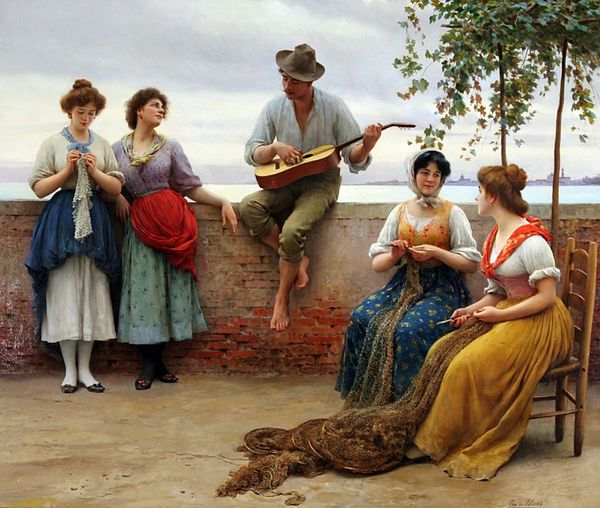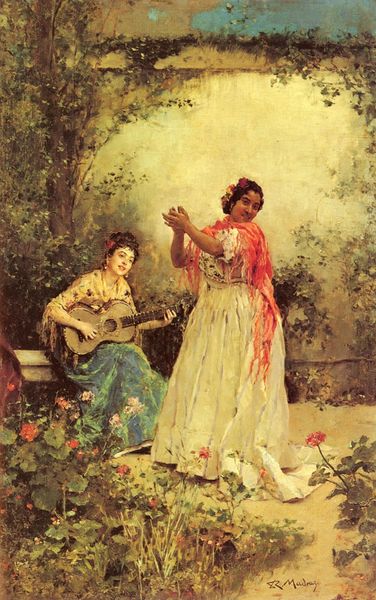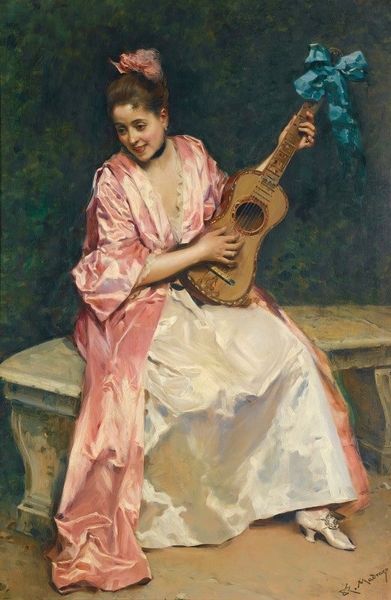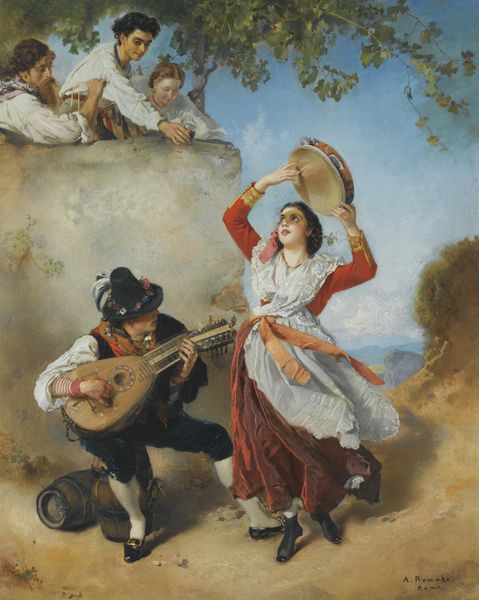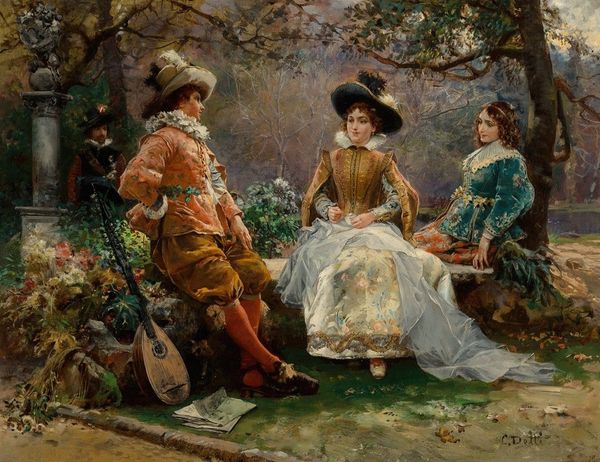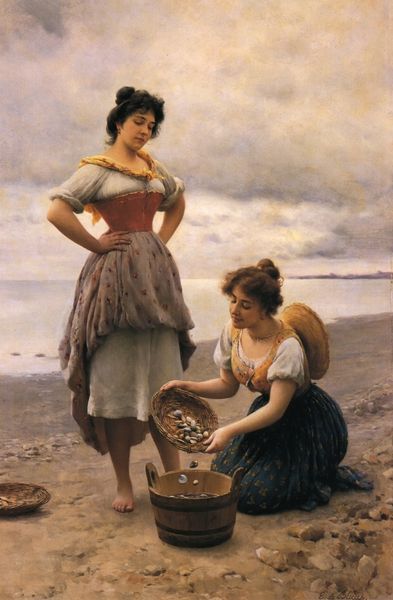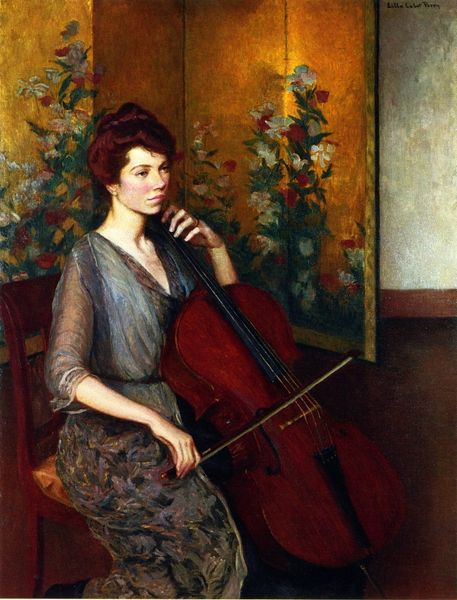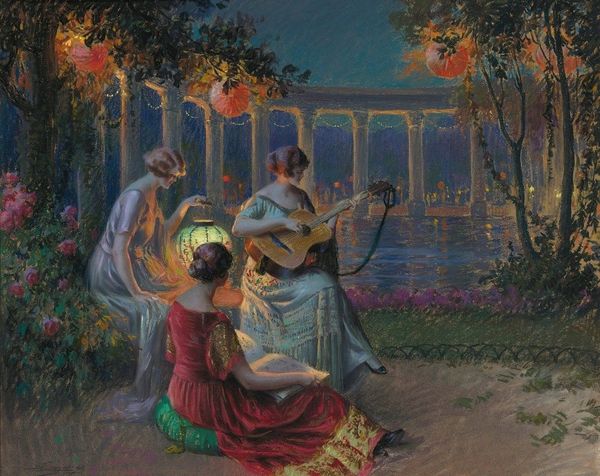
Copyright: Public Domain: Artvee
Editor: This is Eugen von Blaas's "Venetian Melody," painted in 1910. It's an oil painting depicting two women, one playing a guitar, against what appears to be a Venetian backdrop. I'm struck by how posed and serene it feels, like a tableau vivant. What stands out to you? Curator: Indeed. Note the structure inherent in the painting: the composition is divided nearly perfectly in half with a pale roman column balancing the implied vertical thrust offered by the singing figure. How do you view that dialogue? Editor: It's interesting to consider it as a conversation! The column feels so solid, providing a grounding stability versus the other woman who sings to a different tempo and a lighter feeling. There's so much visual tension in that dynamic. Curator: Precisely! This tension provides a dynamic field that draws the eye to both figures within the painting. The chromatic arrangement contributes also: observe how Blaas opposes and emphasizes their differences as each relates chromatically to the ground. Editor: I do notice those connections; now I'm questioning the division. There’s a visual harmony between their dresses and the bricks in the wall—echoes that weren’t initially apparent. They reflect each other, but I wonder why one plays, one listens, as the column literally separates the stage. Is this the formalization of music and painting and art? Curator: One might interpret this division to underscore the fundamental distinction in musical creation and painterly reception. While each woman reflects different responses within the sonic arrangement, together their individual performances enhance the dynamic exchange embedded inside the piece itself. The genius rests within that combination, I believe. Editor: That gives me a lot to think about—how individual elements within a painting interact and contribute to its overall impact, and even deeper, question my initial assessment! Curator: Indeed, close examination of structure begets ever further scrutiny.
Comments
No comments
Be the first to comment and join the conversation on the ultimate creative platform.
